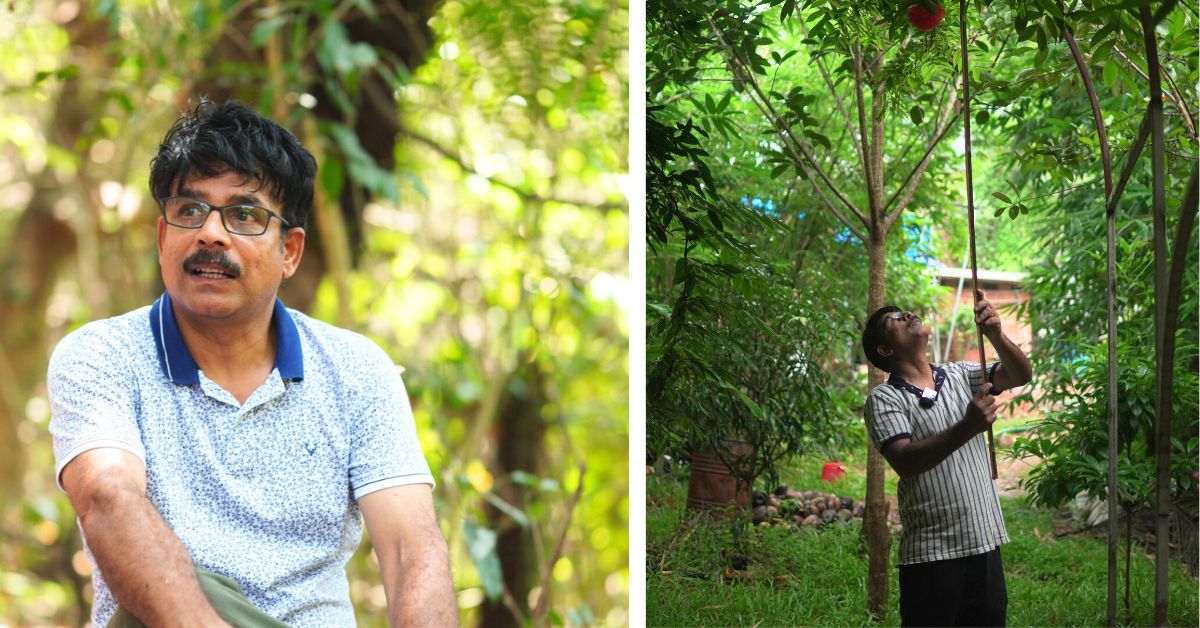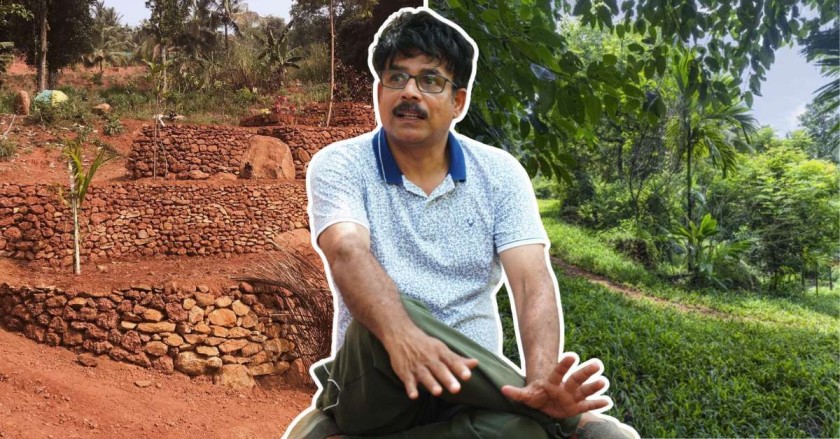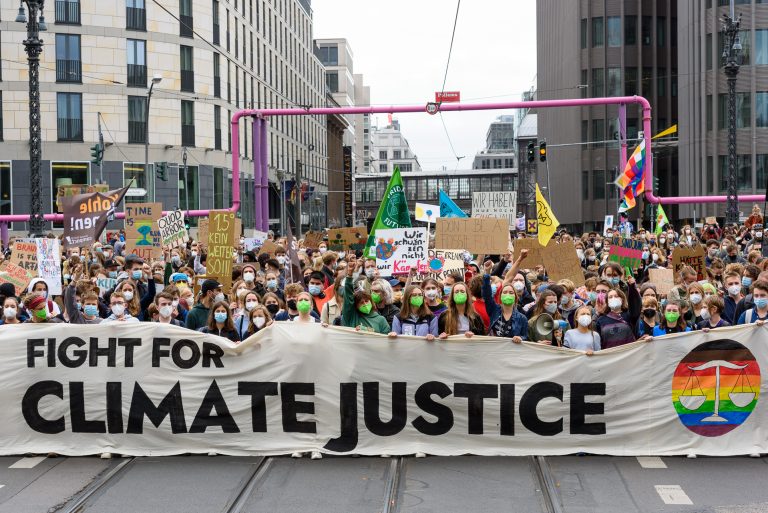Mustafa P A converted a 5.5-acre barren mining site into Greenara Homestay, a green oasis with thousands of trees, man-made ponds, and mud cottages.
In 2016, Mustafa P A embarked on a journey which is not everyone’s cup of tea. He purchased a barren land which was once a mining site to transform it into a green oasis with trees, tropical forests and water bodies.
A businessman by profession, it was his work trips to countries like China, Vietnam, and Thailand that contributed to his inspiration to make a private jungle.
“He looked for the perfect land for nearly a decade before finding this one. His vision is a lush green tropical forest today. The Greenara Homestay is a part of that vision,” Haneena P A, his daughter who manages the homestay with him, tells The Better India.
Located amidst the tropical forest that Mustafa planted in Kerala’s Karipur, surrounding it with seven water bodies, the homestay is the natural getaway of your dreams. The property with three stay options is made with natural materials like mud, straw and wood, using zero cement.
A journey back to his childhood
Born and raised on a farm, Mustafa always missed living in the lush, green area. The inspiration behind the project was partly because he wanted to relive his childhood.
With the development in the state of Kerala, he felt like the green cover was reducing massively. In a bid to do his part in bringing it back, he decided to undertake the project. It was a friend who alerted him of the land where Greenara now stands.

“When I visited the land for the first time, there was not even a single tree on the property. Mining had taken away the life of the place but I could envision a greener future for the place. While I visited the place in summer, I could see the presence of water there,” he adds.
To understand the process of building an ecosystem, he decided to spend a year studying. He referred to various books and videos and spoke to people who had taken up such projects.
“I started by creating a huge pond and then divided it into streams throughout the property. This water became the main source of water for life to flourish here,” he explains.
He created six more ponds interconnecting them with the main one. “I then planted saplings of trees as well as varieties of tropical plants I collected from different countries while travelling and trekking. I also purchased a few around the ponds,” he explains.
The 5.5 acres of once-barren land now houses over 2,000 trees, bamboo and a Miyawaki forest, along with hundreds of fruit trees. It also has thousands of tropical plants seen in evergreen rainforests, and other ornamental as well as medicinal plants.
Calm in the city’s madness
In a bid to share the beautiful forests that he had created, the idea of Greenara Homestay was born.
“Our concept for the farm stay is quite unique. We don’t cater to all kinds of tourists; we encourage people to make a conscious choice about visiting. We really want them to experience nature as it is. We are not interested in providing extravagant luxury. This is not a resort or a place for traditional luxury experiences,” says Haneena.
The duo’s aim is for the guests to experience the farm, learn about tropical plants, and understand the local ecosystem.
“When people book a stay, we always call to ensure they understand what our place is about. We want to make sure they are aware that this is a conservation project and not a resort where everything revolves around luxury.”
She continues, “We provide all essential services, but our focus is on nature and tropical landscaping. We encourage visitors who are genuinely interested in these aspects. We know that this might not be everyone’s cup of tea, and we are fine with that. This approach ensures that our guests have a fulfilling and educational experience while respecting the environment.”
“Our constructions are also built using eco-friendly techniques. Our mud houses are created by the natives themselves, and we have bamboo huts and rammed earth structures,” she says.
The property has three stay options — Mud House, Community Stay and Residency. There are two mud houses, and a dorm-like community hall where 12 guests can stay. The residency is for people who like to stay for a longer time. It is ideal for artists, writers and musicians.
“We do not have any air conditioning in the property as the greenery around the homestay and the natural materials keep it cool throughout the summers,” says Haneena.
Talking about the various activities that you can do at the property, she says, “We have a total of seven water bodies on our property. Out of these, two are designed for swimming. These are not conventional swimming pools but beautiful tropical ponds that are very deep. The water’s colour and the surroundings make for an incredible experience.”
Author
-

As the world's largest platform for positive narratives, The Better India operates across multiple languages, including English, Hindi, Gujarati, Bangla, and Marathi. Its unique focus lies in uncovering the tales of everyday unsung heroes, community change-makers, groundbreaking innovations, and remarkable ideas often overlooked by mainstream media. Building upon the profound impact of storytelling, The Better India has evolved over the past 15 years into a repository of India's change agents. With a robust presence across five languages, The Better India resonates with more than 200 million people each month.



